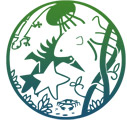| Type of Resource | Laboratory activity |
| Topic | Structures |
| Taxa | Plant |
| Organizational Level | Organ |
| Estimated time to do activity | 2-3 hours |
| Background required/level | Undergraduate - all levels |
| Role of activity in your course | I use this as an early laboratory in my "Plant Biology" course to reinforce the idea of physiological and evolutionary tradeoffs. I like it because it introduces analytical approaches that are novel to the students. |
| What students might learn from this course or activity | 1. Students will understand the multifunctionality of plant organs and how organs have diversified within and are constrained by competing physiological demands.
2. Students will understand how what they experience intuitively as "stiffness" in bending is the result of the product of material properties and shape.
3. Students will gain experience with data collection and analysis. |
| Special tools, equipment or software needed | Samples of stems from woody vines and tree saplings across a range of diameters. In our area, species of wild grape (Vitis sp.) and maples (especially red, Acer rubrum and sugar, A. saccharum) are abundant.
Spring scales differing in range (5-50 N maximum force).
Ring stands with supports.
Meter stick.
Single-edged razor
Microscope and supplies.
Computer with Microsoft EXCEL. |
| Safety precautions, possible permissions necessary | Students need to be careful when using single-edged razors to make transverse sections of woody plant stems. It is often easiest if stem sections are halved or quartered prior to attempting sections. |
| Miscellaneous advice - pitfalls to avoid | When measuring large stems, students may place several spring scales together (in parallel) and add the forces. In very large stems, I have often had students place the stem between lab benches and have a student sit on it to measure bending. Students will then have to convert their weight to force in N. |
| Frequently asked questions by students | Not on record |
| Evaluation | I have not formally evaluated this exercise, but have used it over three years. Students seem to enjoy performing a novel activity where they have no prior experience with the analytical technique. |
| Description | Students investigate the relationship between stem diameter and material properties of self-supporting tree and vine stems to gain a better understanding of how the evolutionary process operates within the constraints of the physical world. |
| Associated Files |
|

